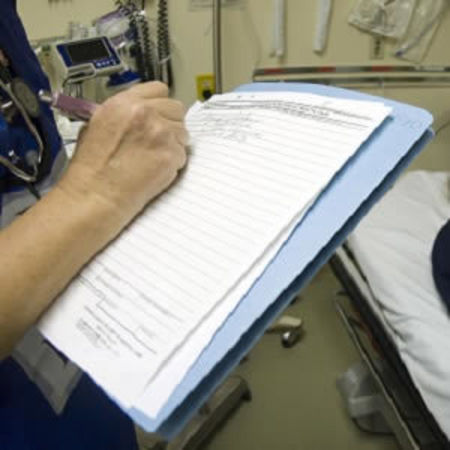Natural language processing of patient notes can be used to determine sentiments of the healthcare providers and associations with imaging orders, according to a study presented at the Radiological Society of North America (RSNA) annual scientific meeting in Chicago this week.
Falgun Chokshi, MD, Director of Neuroradiology Services at Emory University, Atlanta, presented a study that investigated the effect of intensive care unit (ICU) sentiment in medical notes on imaging use, as a proxy for linking medical provider judgement to diagnostic imaging use. Chockshi explained that sentiment analysis is akin to opinion mining and is used by the likes of Amazon to gauge the sentiments in reviews. It is a potential method for understanding healthcare provider ordering patterns and their association with patient outcomes and costs
The study used the multiparameter Medical Information Mart for Intensive Care III (MIMIC-III) database that includes 697,718 provider notes for 52,420 patients and 129,624 ICU stays. Their study analysed close to 284,000 notes for 18,807 stays that included consultations, nursing, nutrition, pharmacy and physician notes. The provider sentiment was converted to positive and negative sentiment scores using SentiWordNet 3.0. They then mapped these to use of imaging. The negative sentiment was more pronounced when more imaging exams were ordered. They also looked at the association between sentiment, time and imaging. If the sentiment was plotted as positive, they found that on the first day of the ICU stay there was a much higher chance of getting imaging. If the sentiment was negative on the first day of the ICU stay, there was a high chance of getting imaging, but as the negative score got more negative, there was a lower chance of getting imaging, perhaps because such patients were perceived as having a low chance of recovery, said Chokshi.
Even with a simplistic sentiment analysis method, the study showed that ICU medical provider sentiment has a non-linear (quadratic) effect on diagnostic imaging use that evolves over time. In future, there may be the possiblity of real-time surveillance of electronic medical record notes for sentiment score, observed Chokshi. This could form part of a decision support system that alerts providers and team leaders when ordering of resources seems to be based on sentiment, more than objective data. This might trigger a “red flag” warning that would prompt healthcare providers to pause and re-assess their next medical decision, rather than reflexively ordering additional imaging in an effort to continue to “do something” for a patient with declining health status.
Claire Pillar
Editorial Director
HealthManagement
Latest Articles
#RSNA16, RSNA 2016, Sentiment, ICU Imaging
Natural language processing of patient notes can be used to determine sentiments of the healthcare providers and associations with imaging orders, according to a study presented at the Radiological Society of North America (RSNA) annual scientific meeting























